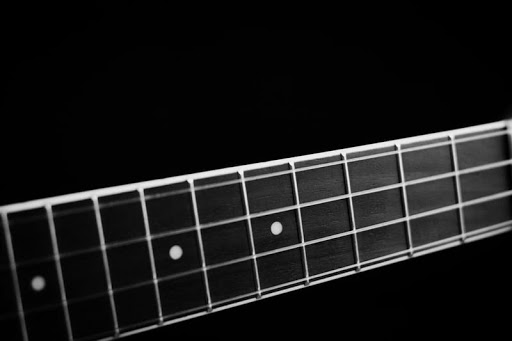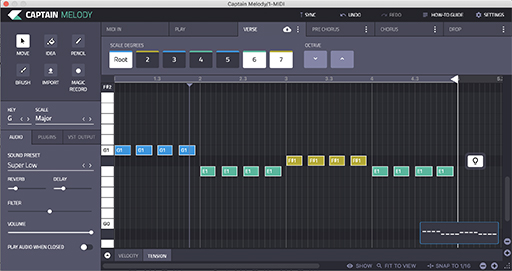Killer Tips for Writing Better Bass Lines
by M.L. Wolf

Often we are so focused on the melody of a song that it’s easy to forget that the bass line needs a lot of attention as well. Every genre of music has its own distinct characteristics; for example, reggae has its own particular bass lines and sound. However, there are some common rules that we follow when writing any bass line. Once you are competent at writing a solid bass line, go ahead and break the rules.
Because the bass line is the key to the chords that we are using in our song, the song writer must be very aware of how the bass is treated. If this part of song writing has you perplexed, read on! Here are some killer tips to writing a better bass line.
Know Your Root
The primary role of the bass is to define the chord by highlighting the root of the chord.
First of all you have to know what key you are writing in. The key will tell you what chords you are going to mainly be working with. If you are working with a sample, Mixed in Key Studio Edition can help you to identify the key that your sample is in. Each chord is primarily composed of three notes; a root, a 3rd and a 5th, with a 7th or 9th sometimes thrown in for flavour.
Let’s take a look at the key of G Major. Your primary chords would be G+, C+ and D+. ( I, IV and V). If you want to write a very simple bass line you would automatically use the root (or bottom note) of each chord. This would be G, C, D. So you could make a 4 bar bass line playing just GGGG CCCC DDDD CCCC and repeat. You are using the root note of each of those chords. This is what you’ll hear in trance and punk music; the root of the chord being repeated over and over. This is absolutely fine and theoretically correct, musically speaking. However, it can sound a bit boring or dull when used throughout the whole song.
This sample is what it would sound like:Using the 3rd or 5th as your Bass Note
This is a perfectly acceptable practise when you are writing a bass line. You can take one of the other notes of your chord and use it in place of the root. In Captain Melody, you can use the Move Tool and the colored scale degrees to move the notes of your bassline. For example, if you want to write again in the key of C Minor and you’ve already got your chord progression, try using one of the other notes that are in your chord for the bass. Usually your song would start by using the root note, then move to a different note, either the 3rd or the 5th. So we would have a 4 bar bass line using the chords of C, Fm, Gm and Fm being C C C C, Ab Ab Ab Ab, Bb Bb Bb Bb, and Ab Ab Ab Ab. Note that C is the root of your C chord, Ab is the 3rd of your Fm chord, Bb is the 3rd of your Gm chord and then Ab is once again the 3rd of your Fm chord.

You could try inserting the 5th in place of the 3rd and this will give your line a little bit of a different feel. Notice that if you use the 5th in your “Fm” chord you will be on the note “C” which is the same note you started your song on. The chord on top will move along but your bass note will remain the same. You might want to do that for one of the two Fm chords but not the other. If you use “C” for your second Cm chord, you will have made a little walking bass pattern. C C C C, Ab Ab Ab Ab, Bb Bb Bb Bb, and C C C C. Replacing the root note of your chord with one of the other chord notes will give you quite a different bass sound without too much hassle.
Write Chords Faster with Captain Chords
- Use Captain Plugins to write your own Chord Progressions, Hooks, Melodies and Basslines
- Export to your DAW
- Available on Mac and Windows.
Play Around with the Rhythm of your Bass Line

The bass will often work with the kick drum and copy its rhythms. Many bassslines in 4/4 time use quarter notes, but you don’t have to stick with that kind of rhythm. Bass lines sound great when you use some dotted patterns: for example a dotted quarter note followed by an eighth note. Many rock songs use this rhythm for the bass line. You can also use rests effectively in a bass line. This generates interest in the work and helps to propel the line along. Listening to some great rhythm sections will give you a feel for how the bass works together with drums to create a solid rhythm section.
Work with Octaves
You can really flesh out a bass line easily by making use of the octave. This is a simple but extremely effective technique. Just moving up and down an octave on the same note will add movement and motion. Try moving up the octave when you want to add motion to the bass line. Moving down can help introduce a new section. Experiment with jumping up and down, or down and up to see how it changes the feel of your line.
Step Outside your Usual Genre
When you are in need of some additional inspiration, try stepping outside of your usual genre. As mentioned before, Dub Reggae is known for its fantastic heavy basslines. Listen to the bass line in this classic Bob Marley example.
Work in a Riff
A bass riff is just a repeated lick, a short little melody. You’ll find riff bass lines in rock and R&B songs. Listen to this great little bass riff in this example of The Beatles “Come Together”.
Ultimately it’s the bass line that will alter the overall sound of your song. You’ll want to experiment with some of these tips and ideas and use combinations of them to come up with your own killer bass line.
